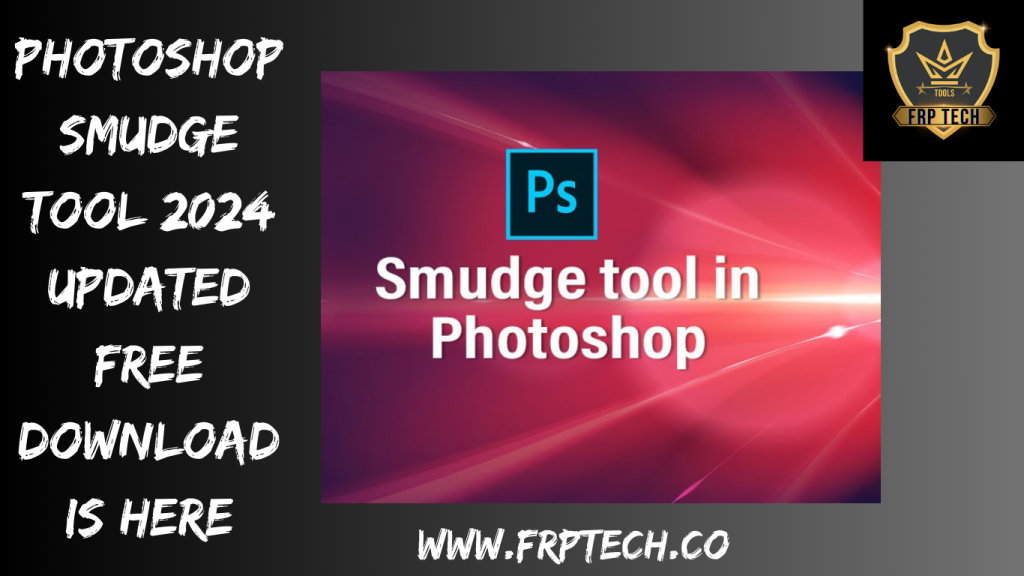Photoshop Smudge Tool Updated
Introduction
Having the correct tools at your disposal may make a huge difference in the constantly changing world of digital artwork, where originality knows no bounds. The Photoshop Smudge Tool is one such tool that has changed the game for both digital artists and photo editors. This thorough tutorial will delve deep into this potent tool, examining its features, inventive uses, and advice for getting the most out of it.
A flexible tool in Adobe Photoshop called the Photoshop smudge tool enables designers and editors to smoothly blend, soften, and modify colors and textures in a picture. It is primarily utilized to achieve various aesthetic effects, seamless transitions, and depth.

Understanding Brush Dynamics
Before you start using brushes in real life, you need to understand how they work. Photoshop has a lot of different brush settings, and each one is different. By playing around with these brushes, you can get different looks, from soft mixing to bold, dramatic smudges.
Key Features:
- Seamless Blending: The Smudge Tool is great at smoothly blending colors and pixels, which makes it easy to move from one part of your picture to another.
- Texture Simulation: It can imitate a wide range of textures, which makes it perfect for making realistic textures like brush lines, canvas, or paper.
- Digital Painting: The Smudge Tool is a must-have for digital painters who want to add fine details, mix colors, and make painterly effects.
- Portrait Retouching: Photographers use it to fix pictures by smoothing out the skin, making the features stand out, and keeping the natural look.
- Settings that can be changed: The tool has a lot of settings that can be changed, such as the size, shape, strength, and hardness of the brush. This gives you exact control over the smudging effect.
- Layer-friendly: It works well with layers and lets you make changes and edits that don’t change the original image.
- Effects for art: The Smudge Tool can be used in many different ways for art projects, letting you make creative compositions and unique visual effects.
- Filters Complementing: When used with Photoshop filters, it opens up new ways to be creative and makes the tool more useful.
- Subtle Changes: It works well for making small changes to photos, like fixing flaws, softening sharp edges, and blending colors.
- Photoshop has a lot of different brushes, and each one works differently, so you can get different smudge effects.
Advice and Hints
To get good at the Smudge Tool, you have to practice and try different things. Here are some tips that will help you get started:
The key is to layer
When you use the Smudge Tool, you should always work on a different layer. This makes it possible to make changes without destroying the file.
Change brush transparency
Try out different brush opacities to decide how much you want to smudge. When the opacity is low, the blending is slight, but when it’s high, the effects are more noticeable.
How to Create Soft Blends
The Basics of Smudging
One of the most basic ways to use the Smudge Tool is to mix colors. With a soft brush and low power, you can gently blend two colors next to each other, smoothing out the edges and making the change look more natural.
Taking Care of Flaws
The smudge tool in Photoshop can also be used to fix up pictures. It lets you fix small flaws, wrinkles, or uneven skin tones subtly. By smudging out flaws, you can keep a realistic look without doing too much editing.
Methods for Advanced Smudging:
Trying to Make Textures Look Real
Want your computer art to look like it was painted on textured paper or canvas? The smudge tool Photoshop shortcut makes it easy to copy these patterns. Change the settings of the brush to get the look you want, and then start painting.
Painting on a computer with smudging
The smudge tool Photoshop definition can make a big difference for digital artists. It lets you mix colors and add complex details, which makes it a great tool for digital drawing. Try out different tools and pressures to bring out your creative side.
Changing the settings for the Smudge Tool
To use the Smudge Tool well, you need to know how it works and change the settings.
Size and Shape of Brushes
The form and size of the brush have a big effect on how the smudging turns out. A smaller brush is good for getting into small details, while a bigger one can cover more space. Try out different shapes to come up with new results.
Being Strong and Tough
It is very important to change the smudge tool Photoshop CS6 download strength and sharpness. When the strength is higher, the smudging is more noticeable, while when the strength is lower, the mixing is more subtle. How sharp the smudge effect is depends on how hard the object is.
The effect of finger painting
If you want the smudge tool in Photoshop to look like a finger drawing, you can lower its opacity. This feels like a soft finger and can be great for some art projects.
System Requirements:
- Windows 10 or macOS 10.14 (Mojave) can be used as an operating system.
- Processor: Multicore Intel chip (that supports 64-bit) or AMD chip equivalent RAM: More than 8 GB
- Pictures and diagrams Card: NVIDIA GeForce GTX 1050 or something similar
- Hard Disc Space: 3.1 GB of available hard disc space for installation; extra free space needed during installation (cannot install on a volume that uses a case-sensitive file system or on removable flash storage devices)
- Monitor Resolution: 1280 x 800 display at 100% UI scaling with 16-bit color and at least 512 MB of dedicated VRAM; 2 GB is suggested.
- Internet Connection: To activate a product and get changes, you need to be connected to the Internet.
How To Use?
- To use the Smudge Tool in Photoshop Elements, choose “Smudge Tool” from the Toolbox and Tool Options Bar.
- Set the brush stroke and any other brush choices you want in the Tool Choices Bar.
- Choose a blending method and amount of blending from the drop-down menu and slider.
- Check the “Sample All Layers” box to use the total color value from all of the levels.
- If you don’t check it, it will only smudge the color of the layer that is currently showing.
- Check the “Finger Painting” box to smudge the chosen foreground color at the start of each stroke.
- If you don’t check the box, the tool will use the color under the finger at the start of the stroke.
- After you’ve set your choices, click and drag in the image to smudge the paint where you click and drag.

Conclusion
In conclusion, the smudge tool Photoshop icon is a tool that digital artists, photographers, and graphic designers can’t do without. It is a useful tool in the digital toolbox because it can blend, smooth, and make artistic effects.
With the Photoshop smudge tool slow, you can let your creativity flow and see your art come to life in ways you never thought possible.
Questions Most Often Asked (FAQs)
Q. Does Adobe Photoshop let me use the Smudge Tool for free?
No, you have to pay for Adobe Photoshop. You can try out a free trial version, though, before you pay for a membership.
Q. Is the Smudge Tool good for professionally changing photos?
Yes, for sure! The smudge tool Photoshop iPad is used by a lot of skilled photographers and retouchers to do advanced retouching and creative editing.
Q. Can I use the Smudge Tool on a gadget with a touch screen?
Yes, you can use the Photoshop smudge tool shortcut on touchscreen devices with styluses that work with it, like the Apple Pencil or one made for your device.
Q. Is there any other program that also has a Smudge Tool?
Yes, you can smudge with other graphic design and picture editing software, such as GIMP and Corel Painter, which are two examples.
Q. Where can I find more lessons and information on how to use the Smudge Tool?
You can find a plethora of online tutorials and tools on websites, forums, and video-sharing platforms dedicated to Adobe Photoshop and digital artistry.
Now Available: http://bit.ly/J_Umma
Get Access Now:
pass: 123
